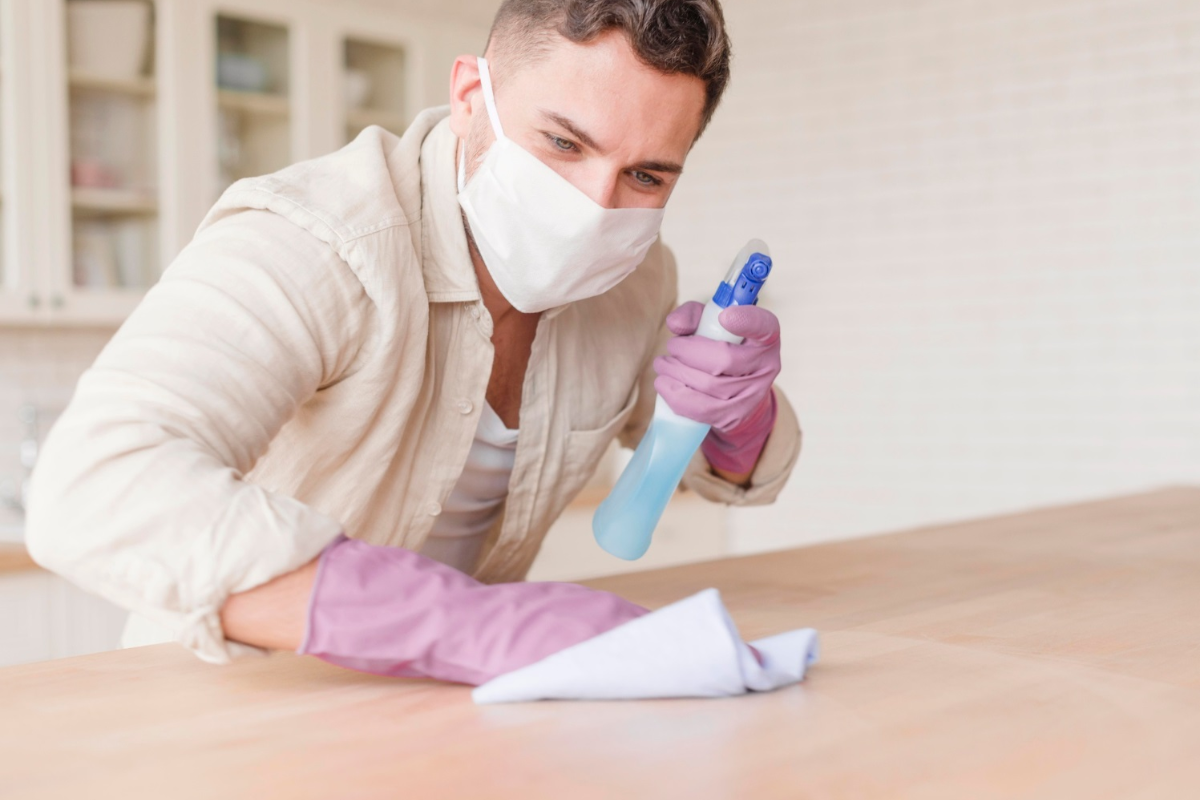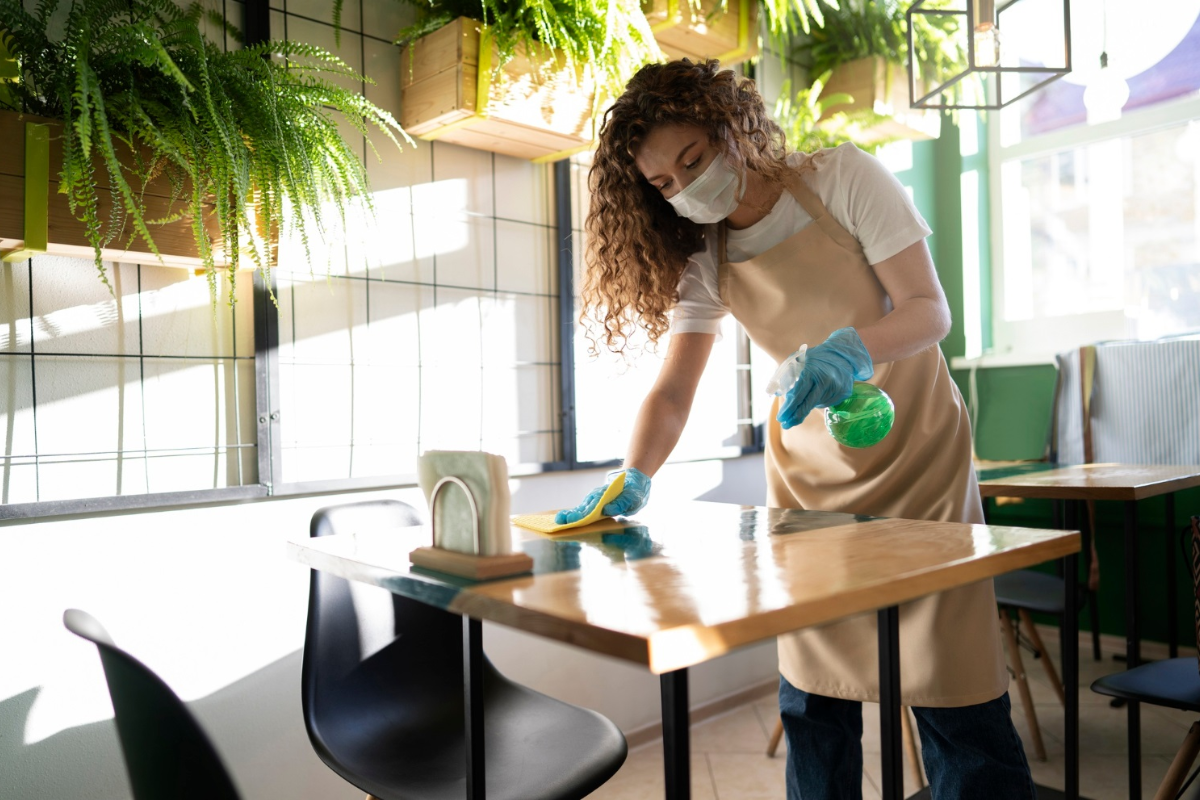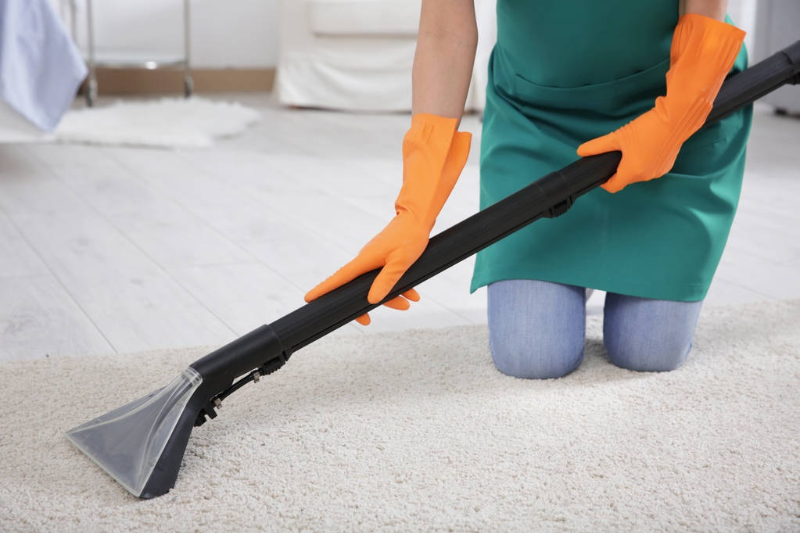The role of cleaning in allergy management

Table Of Contents
Managing allergies has become crucial to preserving a comfortable and healthy living environment in today's health-conscious world. While there are many strategies to tackle this challenge, one often overlooked yet practical approach is thorough cleaning.
This blog explores the pivotal role of cleaning in allergy management, revealing how a meticulously maintained space can significantly reduce the presence of allergens.
By understanding the connection between cleanliness and allergy relief, individuals can take proactive steps toward creating safer, more allergen-free environments. As we delve deeper, it becomes clear that not all cleaning is created equal—highlighting the importance of both routine upkeep and professional intervention. Let's dive in!
Understanding allergies and their triggers
Allergies are immune system responses to foreign substances that typically pose no harm to the body. These foreign substances, known as allergens, can come from food, pollen, or even the environment around us. In indoor environments, where people spend a substantial amount of time, they can teem with allergens that trigger symptoms ranging from sneezing and itching to more severe reactions.
Common indoor allergens include:
- Dust Mites are tiny creatures that thrive in bedding, upholstered furniture, and carpets. Their waste products are potent allergens and can quickly become airborne.
- Pet Dander is tiny, even microscopic, flecks of skin shed by cats, dogs, birds, and other animals with fur or feathers. These particles can cling to various surfaces and are a common allergen trigger.
- Mold: Mold & fungi can grow on damp surfaces, releasing spores into the air. These spores can provoke allergy symptoms, especially in humid or poorly ventilated environments.
Each of these allergens can potentially exacerbate allergy symptoms, making it imperative to understand their sources. Regular cleaning can enormously reduce the presence of these triggers in your home, contributing to a healthier and more comfortable living space. Individuals can take a proactive approach to minimize their impact on daily life by focusing on the areas where allergens are likely to accumulate.
The importance of regular cleaning
Regular cleaning is not just about keeping your space visually appealing; it's a critical strategy in the battle against indoor allergens. Consistent cleaning efforts can drastically reduce the presence of allergens, like dust mites, pet dander, and mold, which are common triggers for allergy sufferers. Let's delve into why regular cleaning is so essential and highlight some often-overlooked areas that can harbor allergens.

Minimizing allergen buildup
Daily activities can stir up allergies that settle on surfaces or embed in fabrics around the home. Regular dusting, vacuuming, and washing of textiles can significantly minimize the buildup of these irritants. Particular attention should be given to bedrooms and living areas where people spend most of their time, as these spaces are particularly prone to accumulating allergens.
Targeting hotspots for allergens
While it's essential to maintain a general cleaning routine, certain areas in the home are more susceptible to allergen accumulation and require extra care.
These include:
- Bedding And Upholstery: Dust mites thrive in the warm, humid environment of beds and upholstered furniture. Washing sheets, pillowcases, and blankets in hot water weekly and using allergen-proof covers can help control mite populations.
- Carpets And Rugs: Soft fabrics can trap allergens. Vacuuming at least once a week with a vacuum equipped with a HEPA filter is recommended. Consider professional cleaning for a deeper cleanse, especially in high-traffic areas.
- Air Filters And Vents: Heating and cooling systems can spread dust and additional allergens through the dwelling. Regularly replacing air filters and cleaning vents can enhance indoor air quality and decrease exposure to allergens.
Benefits beyond allergy relief
Regular cleaning also contributes to a healthier overall environment by reducing the chance of mold growth and accumulation of other irritants. This helps those with allergies and creates a more welcoming and comfortable space for everyone.
Integrating regular cleaning into your routine can significantly influence the quality of your indoor environment. This proactive approach to allergen management can make a considerable difference in reducing allergy symptoms and enhancing the well-being of all occupants in the home.
Professional cleaning vs. routine home cleaning
While routine home cleaning is essential for maintaining a relatively allergen-free environment, there are instances where professional cleaning services become invaluable.
Understanding the distinction between everyday cleaning practices and the comprehensive services professionals offer can highlight the benefits of incorporating professional cleaning into your allergy management strategy.

Depth and efficiency
Regular home cleaning often targets visible dirt and clutter, focusing on surface-level cleanliness. However, professional cleaning services go deeper, employing techniques and equipment designed to remove allergens from areas often overlooked or inaccessible during routine cleaning. Professional cleaners are trained to thoroughly clean carpets, upholstery, and air ducts, eliminating allergens at their source.
Advanced techniques and equipment
Professional cleaning companies utilize high-efficiency particulate air (HEPA) filters and steam cleaners to capture and remove smaller allergen particles than standard equipment. Their methods ensure that allergens, including pet dander, dust mites, and mold spores, are not just redistributed but effectively eliminated from the home environment.
Customized cleaning solutions
Professional services can offer personalized cleaning plans tailored to the specific needs of allergy sufferers. This might include focusing on high-risk areas, using hypoallergenic cleaning products, or implementing specific strategies to tackle mold or pet dander. Such customization is beyond the scope of routine home cleaning but can make a significant difference for individuals with severe allergies.
Time and energy-saving
Engaging professional cleaners allows homeowners to save time and energy that could be better spent on other activities, all while ensuring that their living space remains conducive to good health.
This is especially advantageous for people with busy programs or those who find extensive cleaning physically challenging. Incorporating professional cleaning services into your allergy management plan offers a proactive approach to creating a healthier home environment.
By leveraging professionals' expertise, tools, and techniques, you can achieve a level of cleanliness that significantly reduces allergy triggers, providing relief and comfort to everyone in the home.
This complementary relationship between daily home cleaning and professional intervention forms a robust defense against indoor allergens, ensuring a safer, cleaner living space.
Tips for maintaining an allergen-free environment
Even with the benefits of professional cleaning, maintaining an allergen-free environment requires ongoing effort. Here are practical tips to help minimize allergens in your home between professional cleanings, ensuring a healthier living space for allergy sufferers:
- Stay Vigilant With Daily Cleaning Habits: Regular vacuuming with a HEPA filter vacuum, dusting with damp cloths to trap allergens, and prompt laundering of bedding and curtains can drastically reduce allergen accumulation.
- Control Indoor Humidity: Dust mites and mold thrive in high humidity. Using dehumidifiers to keep indoor humidity levels between 30% and 50% can inhibit their growth and reduce allergen presence.
- Opt For Allergen-Proof Bedding: Encase mattresses, pillows, and box springs in allergen-proof covers. These barriers prevent dust mites from colonizing in bedding, a common source of allergen exposure.
- Keep Pets Out Of Bedrooms: To minimize exposure to pet dander, designate pet-free zones, mainly where allergy sufferers spend a lot of time. Regularly bathing and grooming pets can also reduce the amount of dander they shed.
- Use Air Purifiers: Placing air purifiers with HEPA filters in critical areas, especially bedrooms can help capture airborne allergens, including pet dander, pollen, and dust mite debris.
- Manage Entryways: Use doormats and encourage shoe removal upon entering the home to limit the introduction of outdoor allergens like pollen and mold.
- Prioritize Mold Prevention: Fix leaks and address dampness promptly to prevent mold growth. Regularly clean and inspect areas prone to moisture, such as bathrooms and kitchens, using mold-inhibiting solutions.
- Consider Flooring: Replace carpeting with hardwood or tile flooring, which doesn't trap allergens as easily. Steam cleaning can help remove allergens deep within the fibers for homes with carpets.
Implementing these strategies can significantly contribute to minimizing allergen levels in your home, complementing the deep-cleaning efforts of professional services. Adopting a comprehensive approach to allergen management can create a more cozy and healthier living environment for allergy sufferers.
Work with experts to manage allergies during cleaning
While individual efforts play a vital role in managing allergies, the deep-cleaning capabilities of professional services are unparalleled in creating an allergen-free environment. Leveraging the expertise of professional cleaners offers a robust solution to significantly reduce allergy triggers, enhancing the health and comfort of your living space.
Don't let allergies dictate your quality of life. You can aggressively step towards a healthier home by choosing an exemplary professional cleaning service. Reach out to a trusted cleaning service today, and breathe easier knowing your space is in the hands of experts dedicated to making your home a haven from allergens.
